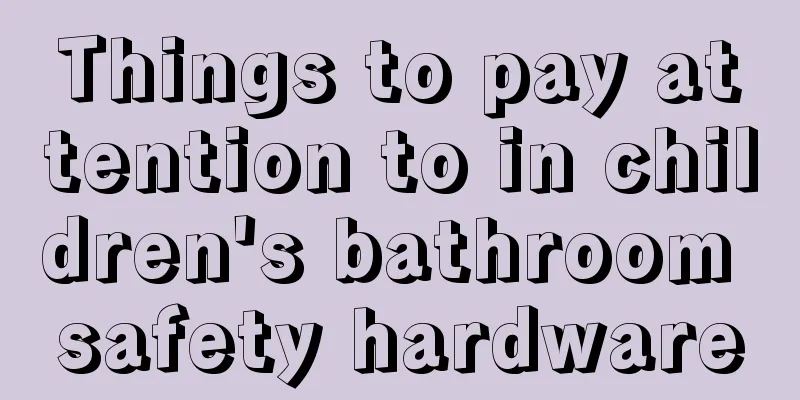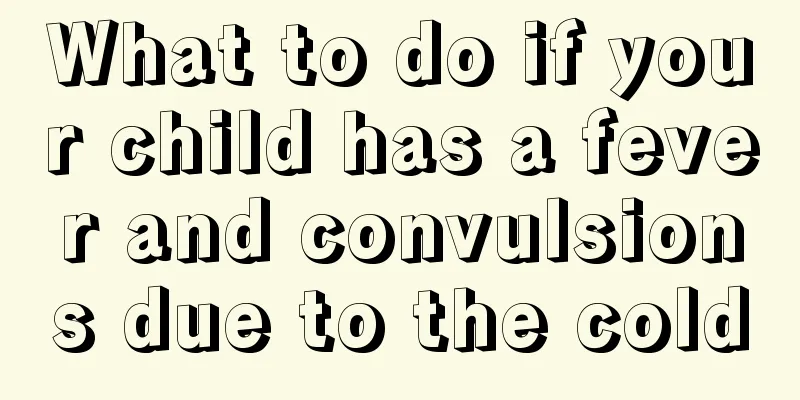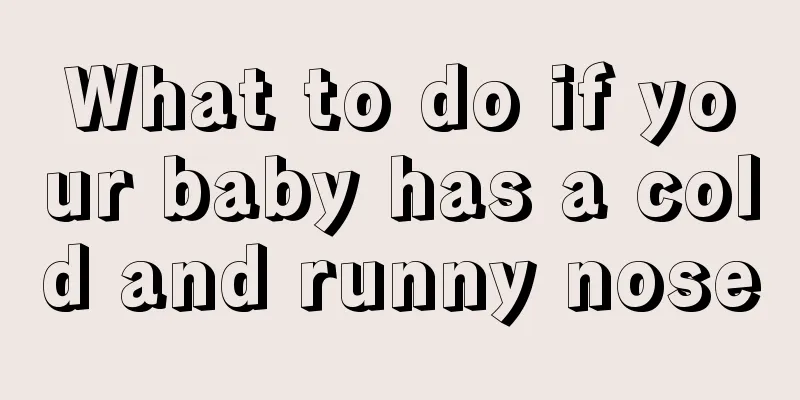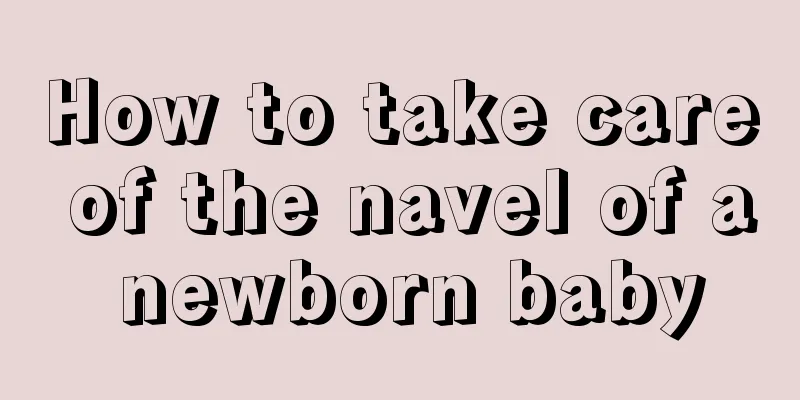Things to pay attention to in children's bathroom safety hardware

|
In order to train their children's courage and independence, many parents let their children complete all bathroom tasks by themselves when they are very young, including washing face, brushing teeth, going to the toilet, etc. If children are not careful, they may fall, get electric shock and other dangers. Therefore, parents must first educate their children to have a certain sense of danger. So, what aspects of children's bathroom safety hardware should be paid attention to? Let's take a detailed look at these contents below. Things to pay attention to in children's bathroom safety hardware The bathroom is not only damp, but also very slippery. For young children, it is best not to go into the bathroom alone. Parents should pay attention, especially in terms of bathroom hardware, to prevent children from falling or other dangers. So, what are the key points to pay attention to in terms of children's bathroom safety hardware? In summary, for children, the hardware safety in the bathroom needs to pay attention to: 1. Bathroom door lock: Now check whether the bathroom door lock can be opened by an adult from the outside. If that's not possible, tape over the door's telescopic spring or remove it entirely (if you want privacy and want to keep the door locked, hang the key on a hook outside the door in case the baby is locked inside). Installing a safety buckle on the bathroom door can prevent your baby from crawling into the bathroom. Check now to see if the bathroom door lock can be opened by an adult from the outside. If that's not possible, tape over the door's telescopic spring or remove it entirely (if you want privacy and want to keep the door locked, hang the key on a hook outside the door in case the baby is locked inside). Installing a safety buckle on the bathroom door can prevent your baby from crawling into the bathroom. 2. Bathtub: Until your baby can sit in the bathtub by himself, consider using a large bathtub to bathe your baby. Safety preparations before using the bathtub: Check the mats and carpets used in your bathroom. Make sure the rubber on the back is in good condition and won't slide, and check the edges for wear or tears to prevent accidents. Before you get in the tub, gather all your supplies and place a thick cotton towel on the floor. Before you get out of the bath, place your baby on a bath towel and never climb out of the bathtub holding your baby. ?Add rubber decals or place a rubber mat on the bottom of the tub to prevent slipping. It is best to wrap a towel over the faucet that fills the bathtub to prevent your baby from accidentally turning on the hot water. 3. Toilet: (1) Do not leave your baby alone to urinate or defecate, whether sitting on a potty chair or flush toilet. (2) Make sure your baby's toilet seat is properly fixed on the toilet. (3) Always place a small stool in front of the toilet to reduce the chance of falling. (4) It is best to install a safety buckle on the toilet lid. Buckle it up when not in use to prevent naughty babies from putting their hands or heads into the toilet. Note: It is best to put the toilet lid down every time. This is safer and more hygienic, and it can also prevent babies who like to use toilet paper from clogging the toilet. 4. Floor drain: After cleaning the area around the bathroom floor drain, it is best to wipe it again with a dry cloth. After the baby learns to crawl, he or she will most likely crawl into the bathroom, and the floor drain is the most convenient place for him or her to reach. Therefore, you must always keep an eye on the baby and do not let him or her put his or her hands in the floor drain, let alone pick up dirty things near the floor drain. 5. Power supply: When all power supplies in the bathroom are not in use, it is best to seal them with tape or put on safety covers, because many curious babies will touch them with their hands. Note: Even if the power supply is sealed, the baby may find a way to tear off the tape, so always be careful not to let him get close to the power supply, including that in other rooms. Dangerous bathroom 1. Be careful after entering the bathtub, because your body is too small. Sometimes you slip into the water and your hands can't find a suitable place to grab, so it is easy to be drowned or choked. 2. There must be an adult around when you take a bath. If your parents are not at home, you must not go to the bathroom to take a bath alone, and you must not lock the bathroom door to avoid accidents. 3. If you have a bathtub at home, you should test the water temperature before entering. In addition, adjusting the water temperature is the job of adults. Never adjust it yourself to avoid scalding. The water temperature should generally be close to body temperature (37 degrees Celsius). 4. Do not take a bath in the bathroom for too long, otherwise you will easily feel dizzy. Don't treat the bathroom as a playground and play in it for a long time. 5. The bathroom floor will be very slippery after being splashed with water, so don't jump or play in the bathroom to avoid falling and getting injured. It can be seen that there are many dangers in the bathroom. Not only children but also the elderly should pay attention to the matters that need to be paid attention to in the safety hardware of children's bathrooms. The elderly should also pay attention to it. Never fall in the bathroom. Once you fall, you should go to a regular hospital for examination as soon as possible to see if you have injured your bones to avoid greater harm. |
<<: How to prevent children's chapped skin and what to do if children have chapped skin?
>>: Children's massage methods
Recommend
What to do if a child has rotten feet?
It is not uncommon for children in some families ...
What should I do if my child keeps coughing?
Frequent coughing is very bad for our throat and ...
What to do if your baby is infected with a cold
For younger babies, their physical constitution i...
What is the treatment for neonatal respiratory distress syndrome?
A newborn is a new life that has just been born. ...
Red rash on back of baby's neck
As the baby grows, his hair will become longer an...
What to do if your baby falls to the ground
For new parents, there are many things to learn, ...
Early symptoms of intestinal necrosis in children
When children fall ill, adults are always very wo...
White spots on newborn baby girl's private parts
Many mothers will find white secretions in the ge...
How to choose a newborn pillow?
How to choose a pillow for a newborn? Many adults...
Newborn baby has a red spot on the face?
As we all know, babies' skin is very delicate...
Analysis of Psychological Problems of Left-behind Children
Left-behind children are a special group of peopl...
Why do children urinate frequently?
Children's bodies are prone to some problems....
What to do if the baby does not poop for three days
This is a very extreme problem and also a very ab...
At what age can you take cod liver oil? Parenting experts are here to answer your questions
According to parenting experts, it is very import...
What should I do if my child has foot pain at night?
Children are usually more active, and excessive e...









